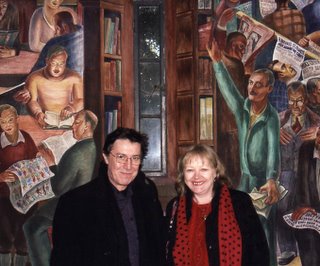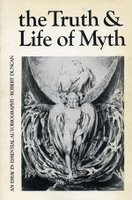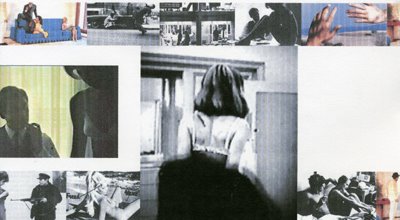
I wrote this report on the Tookie Williams execution back in December, but didn't really know what to do with it. Andrew's report on the Bush protests, and also the thoughts here about Duncan and the intersection of poetry and politics, brought it back to mind, so it feels proper to post it here. Hope it relates &/or interests. --Brent.
++ Killing Stanley Tookie Williams ++
A little after 9pm, December 12, 2005, I was reading online about the approaching execution of Stanley Tookie Williams. I felt unable to concentrate knowing the minutes of a person’s life were ticking down, and not so very far away. At that point the news sites said less than 200 people were in front of San Quentin protesting and holding a vigil.
Out of a desire to be among a few other people who felt the same sadness, incomprehension and anger at the turn of events, I got in my car and drove over the Richmond bridge and took the San Quentin offramp. I arrived about 10:30pm. Police officers were directing traffic, and I was surprised to see lots of people walking up the road that leads to the east entrance of the prison. The national news later guessed more than 1,000 people showed up, while Sfgate.com guessed 2,000 or more.
Along with many other cars I drove in the direction the people were coming from. I followed a steady stream of people for about two miles before reaching an area with auto malls and a Home Depot and available parking spaces. Naturally the prison is not set up with parking lots for mass arrival of protesters. I parked in the lot of a dentist’s office. It was a long, cold walk, but there were many others with me, some with candles, generally quiet. Three or four helicopters were flying overhead. It was possible to see the yellowish towers and walls of the prison over the hill.
Most people were going towards the prison, but a scattering were leaving. A woman came alongside me and asked “Why are people going in the other direction? It’s not until 12:01 right?” I said I thought that, yes, the execution was scheduled for 12:01, but that perhaps they were protesting all day or just had to leave for some reason. I pointed out that it wasn’t like a concert that started at a certain time. I said it kindly, but I was already noticing the way the scene did have a lot in common with a concert: late night, specific start time, streams of people, parking issues, cops directing traffic, crowd control, etc. The woman ended up stopping someone and asking why they were going in the other direction. “Because we’re leaving,” they said. We walked on and she said, “Now I feel like an asshole."
The road to the east gate had eucalyptus trees on the left; beyond them was the bay, calm and dark. On the right of the road was a large hill. There were a few houses the last 200 yards before the gate of the prison, and their owners were out with flashlights, looking a bit nervous about the crowd. More and more people, some standing quietly in small groups, some sitting on the ground, more groups with candles. I passed the last cross-street, which goes up just a few hundred yards to the right. At the corner a large group had gathered around a man whom I later learned comes to all the executions. He is in favor of the executions, says he comes “to represent the victims”. His sign said something about biblical retribution, and he had a bullhorn and was shouting things about Williams burning in hell and all of the people at the vigil burning in hell. People were pressing in on him and shouting back at him aggressively.
I was still a hundred yards from the makeshift stage that they had set up not far from the gate. It wasn’t possible to go much farther forward because people were packed from one side of the street to the other.
Thus far I had felt like the whole thing was more circus-like than I had expected, and I had expected a circus. The media had trucks parked on both sides of the street. They had obviously rented out the houses of the residents in some cases. Media people were inside people’s living rooms with small television screens and impromptu command centers. Many folks with news cameras were weaving through the crowd. To me the camera operators seemed to have a marked preference for footage of African Americans, especially if they seemed to be crying or praying. Later I watched one very weepy black woman whose friends asked no less than four camera people to stop filming her. I also saw a black woman on her knees praying and being swarmed by photographers.
On the way up the street I had kept an eye out for the two Los Angeles “shock jocks” who, according to SF Gate, had been broadcasting from near the gate and yelling things like “Kill Tookie” and creating a lot of anger from protesters, but I didn’t see them. After I had passed the religious zealot the people were quieter, but still it was a curious mix indeed. There were largely white Christian groups carrying thin crosses and signs that said things like “End state-sponsored death: no executions, no abortion, no war.” Up on one hill were about 30 anarchists in black sweatshirts waving a desecrated U.S. flag and holding signs about native american rights (they later started burning the flag briefly and this caused a vociferous argument in which their status as indigenous people came up a lot). Near the gate about 30 or 40 particularly energetic people, mostly younger black men, were standing on the top of a trailer. They later started a “Fuck the Police” chant. But by and large it was quite peaceful for so many people. When people realized they weren’t going to get much closer to the stage, they generally just stopped and stood around, looking a little dazed or sad. People had all kinds of digital cameras of course, along with the media cameras, and there was a lot of picture taking.
I ended up in front of a blue painted sign that said, “Arnold: Would You Put an Austrian To Death?” The word Austrian was the largest word on the banner. It was a large banner, and two women were holding it. After a few minutes one of them left, and the remaining woman looked directly at me and asked, “Can anybody help hold one end of this sign?” I can’t say I was quite on board for the sentiment, which seemed a little off somehow, but I agreed and ended up holding one end of the sign for awhile. The woman said, “Hold it tight so they can read it. I want the Austrian media to see it.”
I held it for awhile but felt increasingly strange about not quite getting it in some way (I actually think Arnold would put an Austrian to death, for instance). I finally gave back the pole to her and wished her luck, and went over and stood near a fellow tall guy at the edge of the street.
I was just close enough to hear bits of the speeches if the speakers were loud. It was a strange group of speakers and reinforced that sense that the “big tent” of the left leads to some odd bedfellowing. So one guy was up there and said “I’m a hip hop entertainer” and was promoting his web site, and saying that Tookie’s cause of redemption was also hip hop’s cause, which seemed an uncomfortable stretch to me and I think to others. Other people were trying to connect Tookie to causes like the war, which to me was sometimes done ok and other times seemed disturbingly grafted on. There were readings from Tookie’s children’s books but I couldn’t hear them very well. Actually the preachers were usually the best speakers: passionate but directed, eloquent, with a clear context, and practiced.
Along with the feeling I had that many of the speakers were not leading very well (in the sense that they couldn’t seem to get a sense of the crowd or really zero in on what needed to be said) there was also, I felt, a lack of cohesion about what to sing or chant, and perhaps about what kind of event it was in the first place. Natural for a diverse crowd, maybe. Joan Baez had been by and sang Swing Low, Sweet Chariot, and that seemed a choice everyone could relate to, and appropriate given what we had in front of us. But then there were the more religious people singing religious hymns that the non-religious didn’t seem to want any part of. There were many people singing John Lennon, especially Imagine, but that seemed kind of light and somehow far afield to me, and I got the sense that others were also wondering if it was due to the recent 25th anniversary of Lennon’s death or something. This added to my sense from previous participations, such as during marches against the Iraq war, that there is a protester culture that just goes from event to event and often doesn’t know what the event is. A few drummers were in the audience and they seemed well tolerated. One fellow was playing the saxophone, jazz riffs. For awhile there were a few people trying to get some hip hop sing-a-long thing going, not to much success as one might imagine. At one point a group of about 25 started singing, for some reason, Lean on Me, which caught on a bit, but then died when the full irrelevance of the lyrics became plain.
Of course there’s the question why sing at all, but many people did seem to feel that something along those lines should be enacted. Others, probably the majority, clearly felt silence was best. But the search for the right songs reinforced, for me, how splintered and without shared foundations our culture really is. Maybe that’s good in some ways. I found myself thinking a lot about the Irish and Black slave culture and other cultures with strong, clear traditions of ballads and shared songs.
When 12:01am rolled around everyone got very, very quiet. Tookie was not actually declared dead at 12:35am, but those near the gate, including me, didn’t even know for sure that the process had begun. The media people and some others had earphones presumably connected to some updates on the situation, but everyone else just stood there. Unlike a lot of other events, I noticed that no one seemed to ask one another questions of the “Do you know anything?” variety. A pallor of inevitability and pointlessness to such questions maybe. At 12:01 some blew out their candles, some cried. The only noise was the drummers, who didn’t pause or stop.
About a quarter past midnight an African American man, maybe in his late 20s, came pushing through the crowd with a few people behind him. Twenty feet from me he started yelling at the crowd and berating it. He kept yelling as he went down the street, for about five or six minutes. He was saying, “You bring your motherfucking candles? You come to watch a nigger die? Niggers is dying every damn day. Niggers dying in the ghetto every damn day. You know what? Fuck your pity. Fuck you motherfucking white liberals with your motherfucking candles. You want to see a nigger die? Come to the fucking ghetto. Come to the motherfucking ghetto then you’ll see. You white liberals are the same as Bush. You are Bush. You come here with your motherfucking candles? Fuck your motherfucking candles.”
No one said anything back to him. He went on and on. Honestly an incredible invective in terms of sustained energy. We could hear him still yelling some fifty yards past us. Once he had passed pretty much beyond earshot, a woman near me said to her friend, “You know, he’s right too.”
I don’t know if he is right, or if rightness is really the question. But certainly it affected me. It’s probably why I’m writing this now.
About 15 minutes after that, it must have been announced that Tookie was officially declared dead. People started to leave in very large numbers. Within ten minutes I was able to walk up to the stage fairly easily. There wasn’t much to see. A low police fence was set up about 100 feet from the actual gate of the prison. It looked like no one had crossed it. On the other side of the gate three men stood with their hands gently on the bars, looking out at the crowd, two in suits, one a guard. I noticed how many wires were on the ground, running from media trucks and crossing the street and everywhere. Lots of people must have been standing on them.
I started to walk back. At one point I stopped to watch a man give a report into a camera. The report was in Italian. I caught the names Sean Penn, Jesse Jackson, and Joan Baez. He stopped giving his report and he talked to the cameraman and a woman about deciding to come up, when he decided, what it’s like being based in L.A. He had a way of speaking that demonstrated great incisiveness of intelligence, great accuracy, and a lot of years of going to media events of this sort. I think he was American. If he was Italian his English was perfect.
On the long walk back to my car, the road passed near the freeway. A car on the freeway had pulled over, and some men had a sign they were holding out of the window, but I couldn’t read it. I later read on the news that pro-death penalty people mostly drove their cars on the freeway and held signs from there, rather than get near the crowds of protesters. I was walking in a group of about 15 people, and these guys were yelling down at us. They were saying, “Shave Tookie!” Maybe that’s what their sign said too. A lot of the signs at the protest had read Save Tookie. They said: “Shave Tookie. Get it? Save Tookie…Shave Tookie.” They laughed and kept yelling it.
It is my general position that nothing should be forbidden to humor. I’ll joke about things that are sacred, especially. I almost never feel any joke or topic should be off limits. Tookie had a pretty full beard. “Shave Tookie” isn’t all that bad of a pun. If it had been on the Daily Show I might have laughed. But: context. It wasn’t funny there. It wasn’t at all funny. I felt a lot of hatred for those guys.








